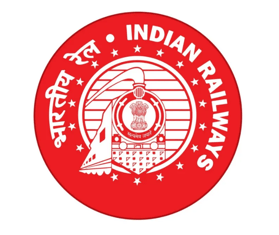Building a Train Bridge to Last 100 Years
India’s Manipur state is located in the beautiful lower Himalayan mountain ranges surrounded by green valleys, streams, and majestic waterfalls that provide a wonderful backdrop. Within this extreme beauty, however, there is very little that connects the region’s towns and villages to the state’s capital city of Imphal. The primary mode of transport is an aging 230-kilometer-long highway that spirals around hills with sharp curves and steep gradients. Therefore, the Ministry of Railways, Government of India, decided to build a 111-kilometer rail line that cuts along the steep hills to reduce travel time. The rail line includes a 141-meter-tall bridge in a very active seismic area with high-speed winds and rainfall totals of 3,500 millimeters per year. Indian Railways, a statutory body under the jurisdiction of the Ministry of Railways, was charged with designing a rail bridge that could support high-speed and broad-gauge railway trains for the next century.
A Meticulous Design to Overcome Multiple Challenges
Indian Railways knew that they needed innovative technologies to overcome significant challenges at every stage of the project – from deciding on span configurations, foundation types, and designing the various bridge components to maintaining the lifecycle of the asset – to support high-speed trains traveling over the bridge. As a result, they needed to meticulously design and construct the bridge while considering all deterministic and stochastic loads to ensure safety over its lifespan. They also only had a limited timeframe to address these challenges and make decisions quickly and accurately.
Innovative Applications Lead to Optimal Decision-making
After researching several software options, Indian Railways finally settled on STAAD.Pro structural analysis and design software because they determined it to be the most reliable, flexible, and accurate application to meet the project’s difficult terrain challenges. More deliberations led them to adopt other Bentley applications that could evaluate various options to ensure bridge safety, stability, and sustainability. STAAD.Pro allowed them to engineer the bridge configuration, using hollow reinforced concrete column (RCC) piers supported by RCC bored-cast in-situ pile foundations with 106-meter-span open web steel girders. They also used Bentley applications for detailed structural design, determining that the bridge girders could be constructed with a variety of steel materials. Indian Railways also used PLAXIS geotechnical analysis software for the slope stability analysis of the complex soil conditions, improving their decision-making. Furthermore, they determined bridge excavations and temporary slope-control measures through PLAXIS, ensuring the overall safety of their project team members. Lastly, Bentley software enabled them to dictate slope protection measures and to visualize rail alignment.
STAAD.Pro and PLAXIS Ensure Overall Safety
By using STAAD.Pro, Indian Railways was able to assess various options—such as arch, suspension, and cable stays—before choosing supported open-web steel girders. They used STAAD.Pro to quickly calculate the required parameters for various materials, geometry, and load combinations when designing the hollow concrete columns, saving time and costs on the project. The STAAD.Pro-generated reports provided them with easy-to-understand visuals, which helped facilitate the approval process. Moreover, STAAD.Pro enabled Indian Railways to complete the 3D analysis of the bridge for dead and live loads, as well as earthquake, wind, and temperature loads. They used STAAD.Pro to optimize the bridge without having to compromise long-term safety, saving USD 9.26 million. Overall, they saved USD 24.61 million using the software and completed the entire project by their end-of-2020 deadline.
Outcome/Facts
- The primary mode of transport in India’s Imphal region is an aging 230-kilometer-long highway that spirals around hills with sharp curves and steep gradients.
- The Ministry of Railways, Government of India, needed to build a 111-kilometer rail line that includes a 141-meter-tall bridge in a very active seismic area with high-speed winds and rainfall totals of 3,500 millimeters per year.
- Overall, Indian Railways saved USD 24.61 million using STAAD.Pro to help them meet the difficult terrain challenges, completing the entire project by their end-of-2020 deadline.

"Bentley products enabled planning, designing, and constructing an iconic project in challenging conditions, as well as achieving economy, efficiency, and sustainability for a direct cost saving of USD 24.61 million."
Saibaba Ankala
Chief Engineer
Indian Railways

